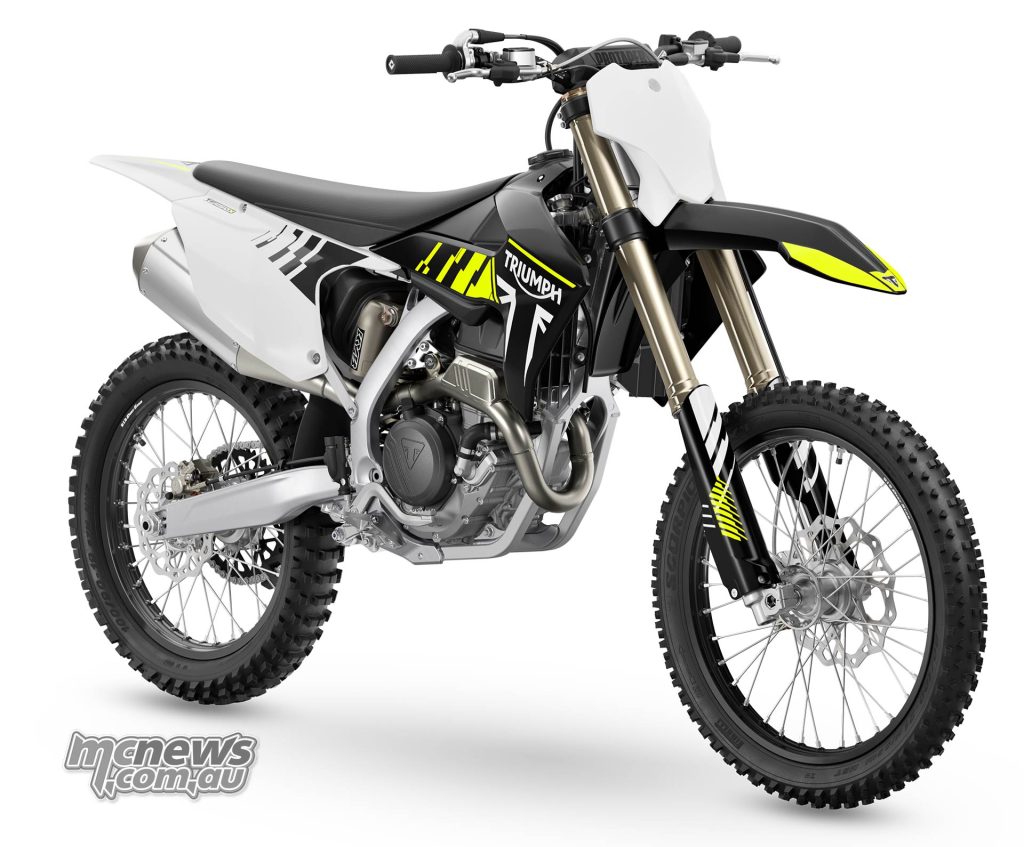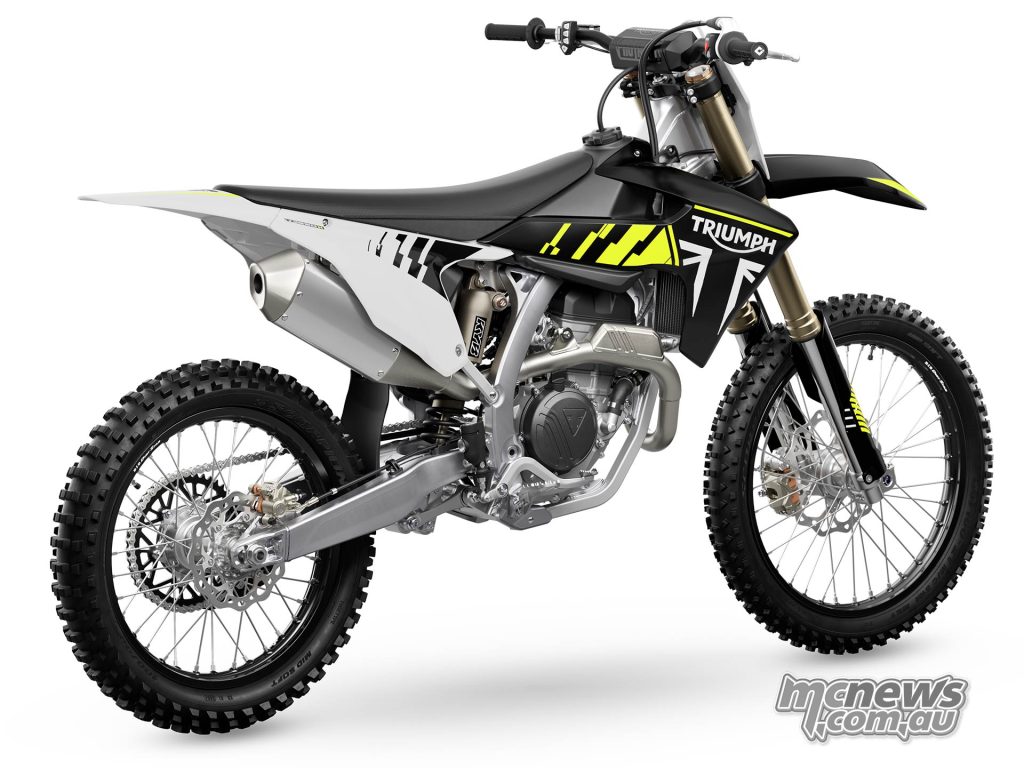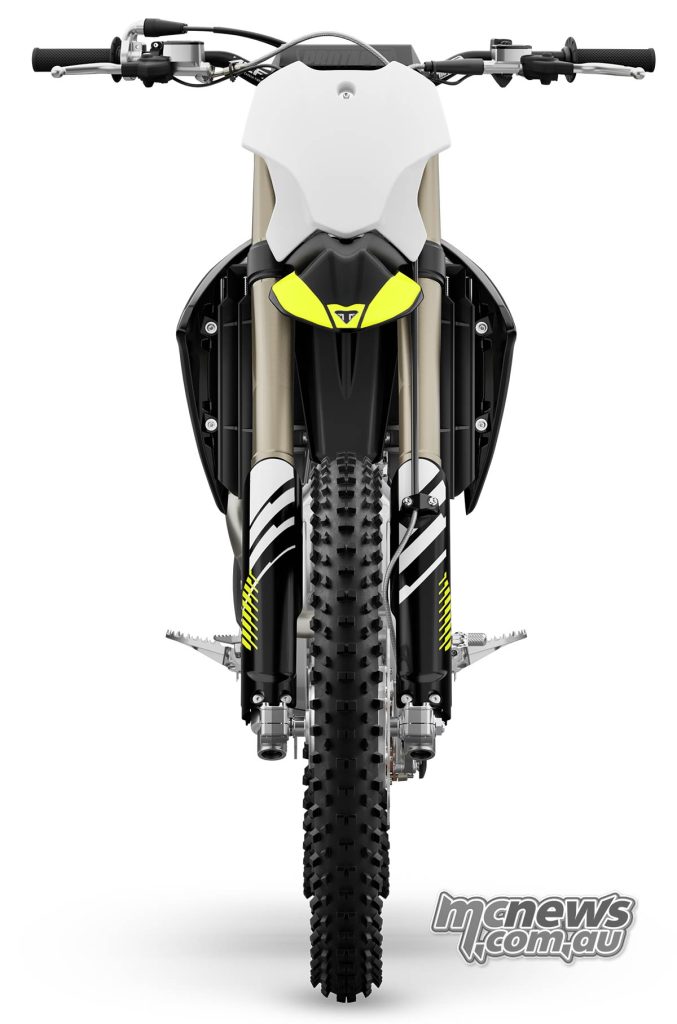Triumph TF 250-X Review
Bike test by Aaron Clifton
A lot of people might ask: “What business does Triumph have in the motocross game?” Fair question. Sure, the factory has some gems in their line-up, like the Rocket 3, the 765, the Tiger, and the Speed Triple, but a motocrosser?
What is that about?
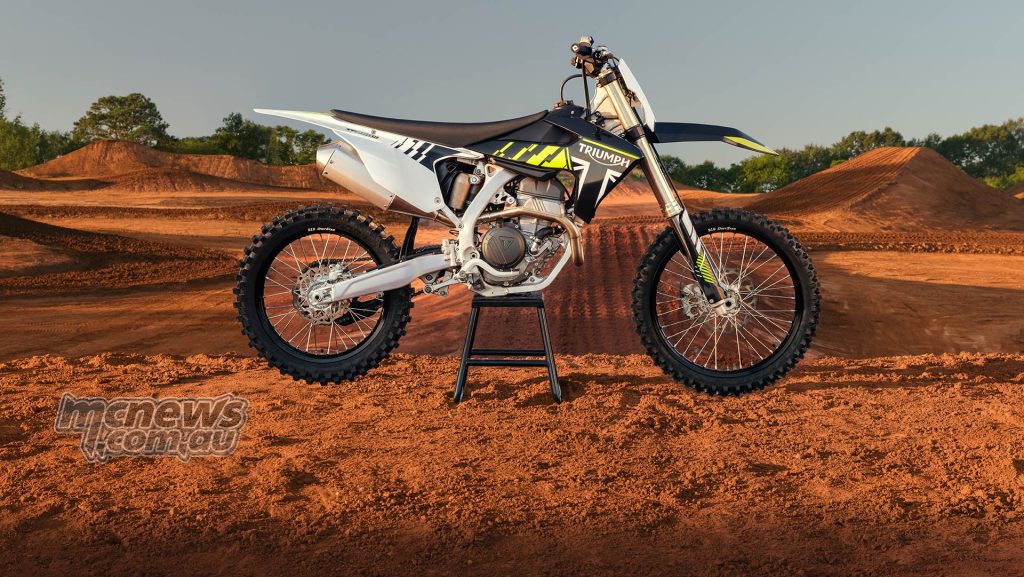
The 250cc motocross market is so very well established, why is Triumph even interested?
From the factory’s perspective, the goal is simple: Triumph no longer wishes to be seen as the “dad” bike of the industry. Supplying Moto2 engines to MotoGP is just one prong of this attack. Clearly, Triumph is not messing about.
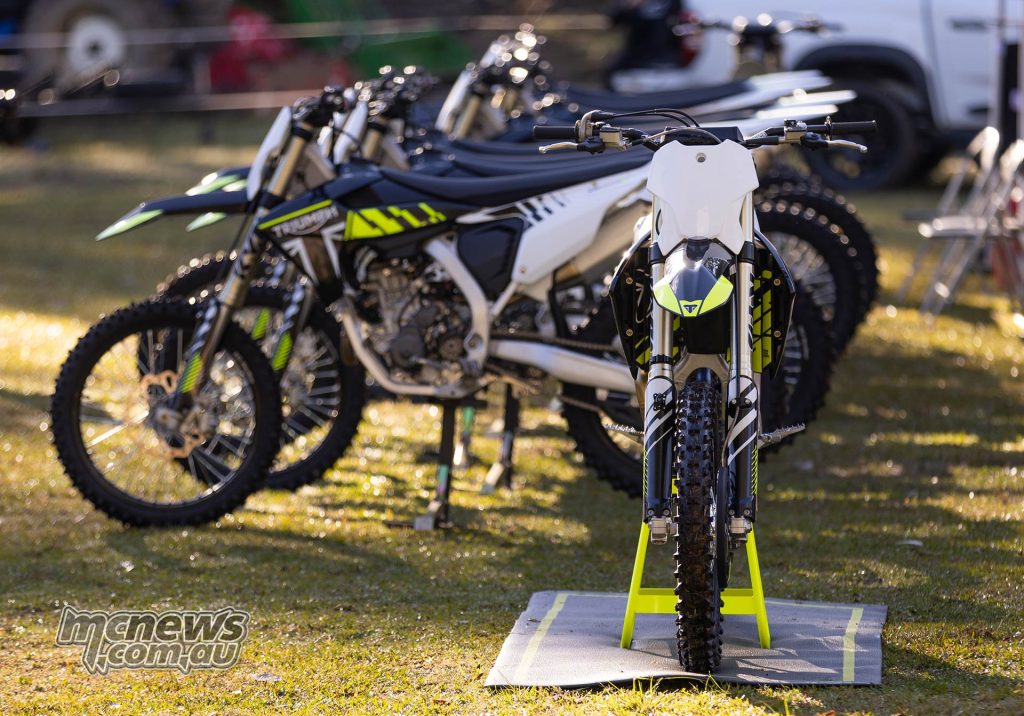
This was precisely the thinking that birthed the TF250X – create a class-leading product and win with it.
The idea was to design a bike that provided a usable platform for all levels of riders, from pro-level to the everyday punter.
Triumph has been building motorcycles since 1902 – albeit these days under the new and very welcome Bloor regime. So Triumph has moved with the times, changing, developing, and continually improving.
We consumers have changed a bit over the years as well, but not as much as you might think.
One thing that has remained constant throughout the generations is people’s innate scepticism when “the new kid” turns up.
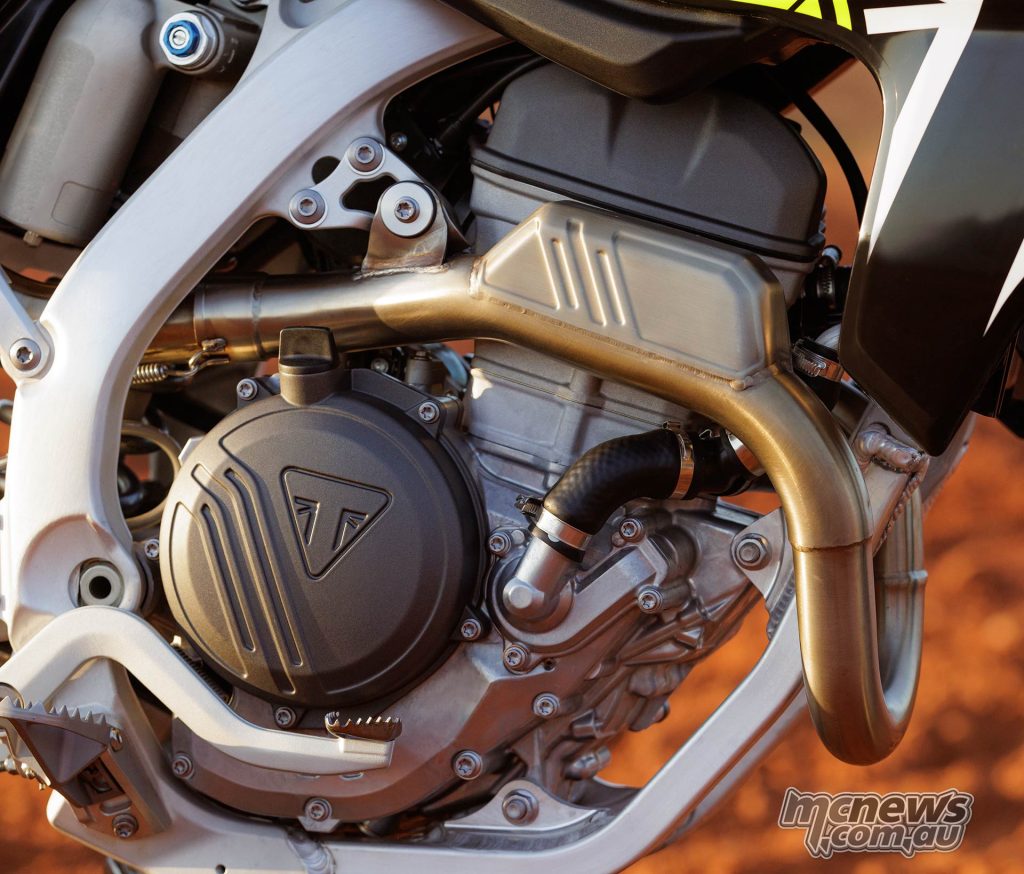
It’s in our nature. The boys in school would glare intently as the new kid entered the classroom, trying to place this new creature in the pecking order.
Was he going to overthrow the status quo? Was he stronger, faster, smarter? Was he a threat to one’s standing with the opposite sex? Was he a threat in competition?
We took measure of these things quickly and quite often mistook the situation. But we made up our minds and convinced ourselves we had read the newcomer correctly.

And so it was when Triumph revealed its new motocross bike to the world.
The noises came from all corners of the Internet.
“It’s just another orange one,” they moaned.
“They’ve purchased the rights off the Austrians,” they groaned.
“Triumph aren’t motocross bikes; they can’t compete with the current competition,” they mewled.
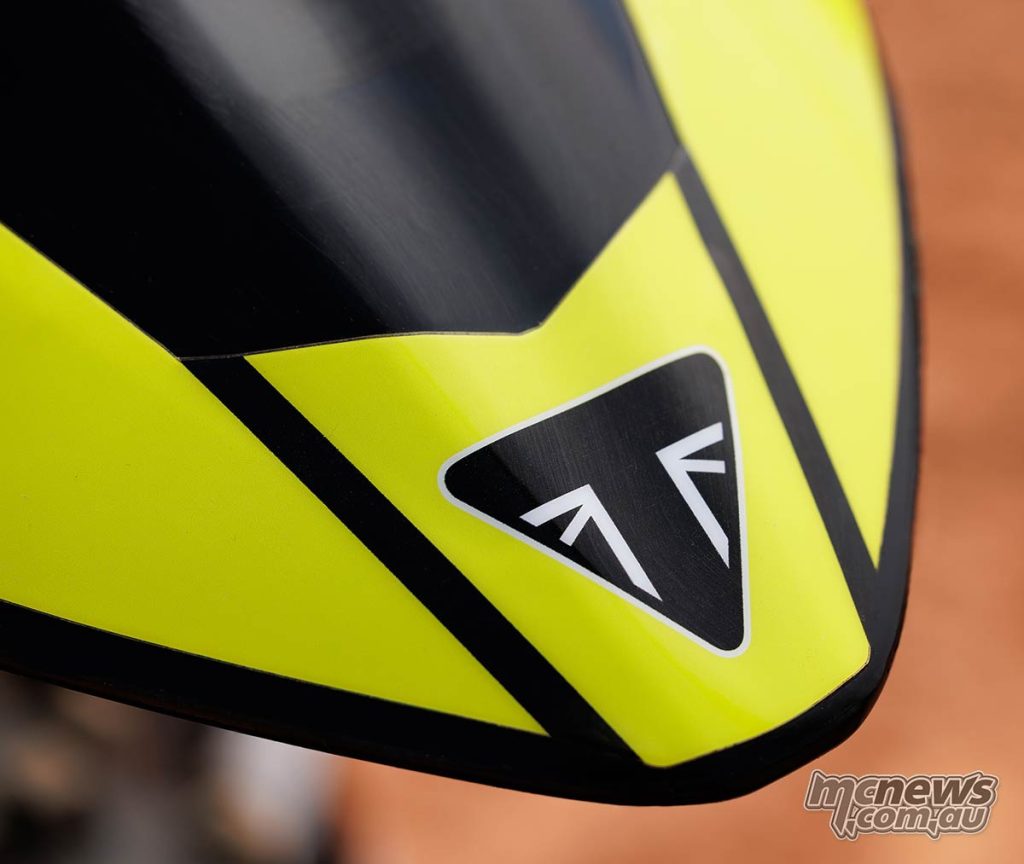
Some people even dismissed them as being parts-bin specials. And all this before anyone had even seen one in the flesh, let alone perched their uninformed arse on it. Allow me to dispel this nonsense for you.
Triumph set about building an MX weapon that would rival anything in the current 250cc category. Of course, they did compare the market but were not out to buy, beg, or steal ideas from anyone.
This is Triumph’s machine from the ground up.
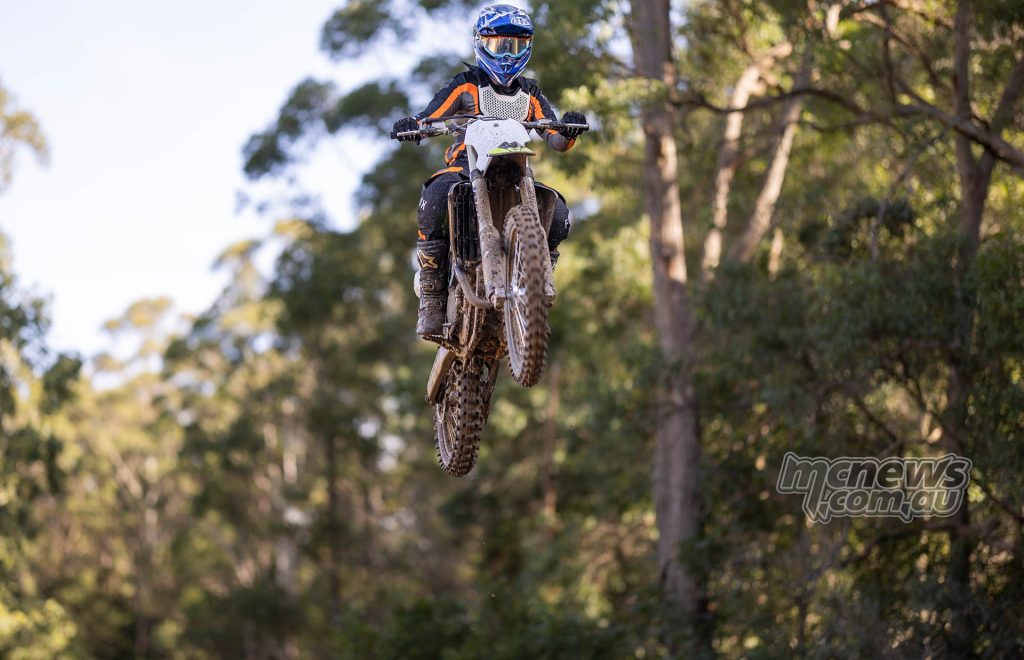
Triumph employed Ricky Carmichael, or ‘The GOAT’, to lead and refine the development of the machine, along with Clement Desalle and Ivan Tedesco.
The development was a five-year project. The result? Quite amazing.
The finished product is powered by a 250 cc engine producing 47 hp at 13,500 rpm.
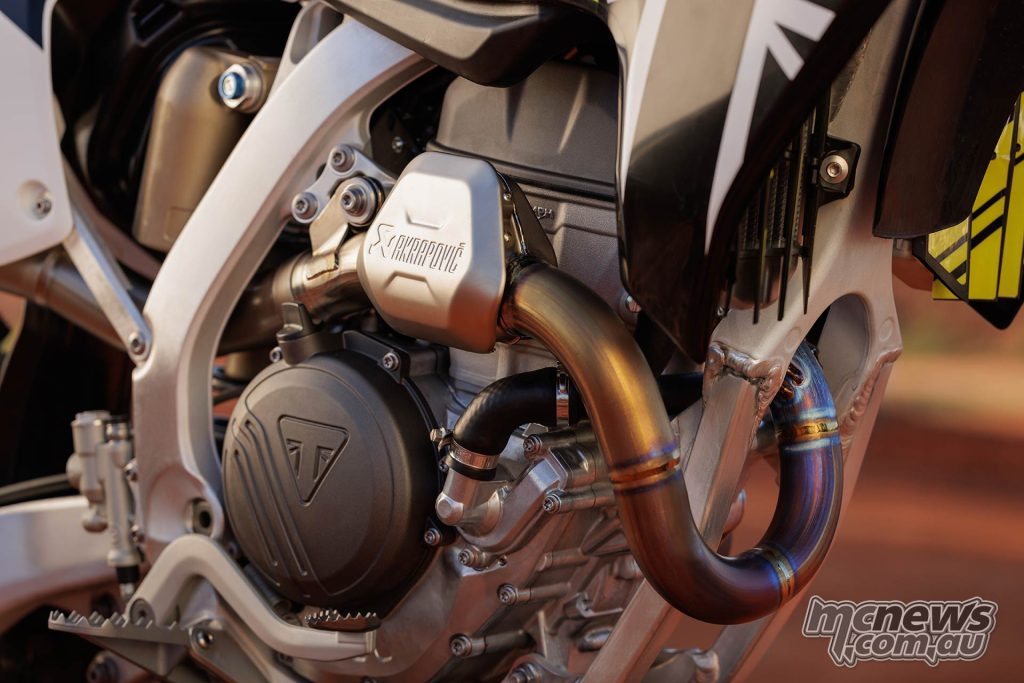
There are titanium valves on both the intake and exhaust, an Exedy clutch, Athena ECU, and a five-speed gearbox. The bike weighs 104 kilograms.
Now, it’s been a good two years since I’ve ridden a 250 machine. But even so, coming off my YZ450F, the TF 250-X engine did not disappoint. The mid-range and top-end of this bike is staggering for a 250. It has a strong feel in the meaty part of the powerband, and it revs eagerly to the moon.

The power curve has no peaks, valleys, or flat spots; it’s a nice linear pull all the way through the rev range. I did feel I would like a bit more bottom-end out of it. This wasn’t to say the engine itself lacked something down there. It certainly didn’t. It just seemed to be a gearing issue.
The standard gearing is quite tall and would be fine on more open tracks, but in tighter corners, I needed to use the clutch more than I would have liked. A larger rear sprocket would be enough to fix this and bring some of that Yahoo down lower in the rev range. The bike runs a 48-tooth sprocket, but I would opt for 50 or even a 51, depending on where I was riding most.
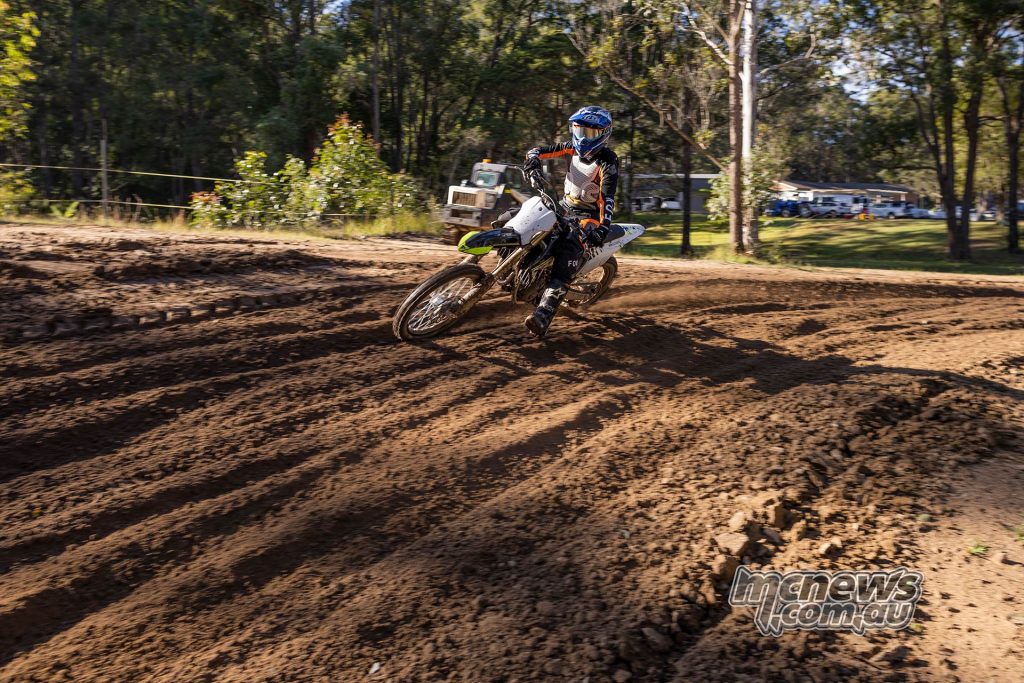
The frame is a standout feature and unique to Triumph. It’s a hybrid spine frame with a twin cradle. A single spine runs from the steering head down under the fuel tank, forming the twin cradle just in front of the rear shock mount. The frame is welded together by hand.

Coupled with KYB suspension front and rear, this package provides a great platform for a wide variety of riders. It’s a compliant, almost plush ride, which is a feeling not many manufacturers can achieve straight out of the box.
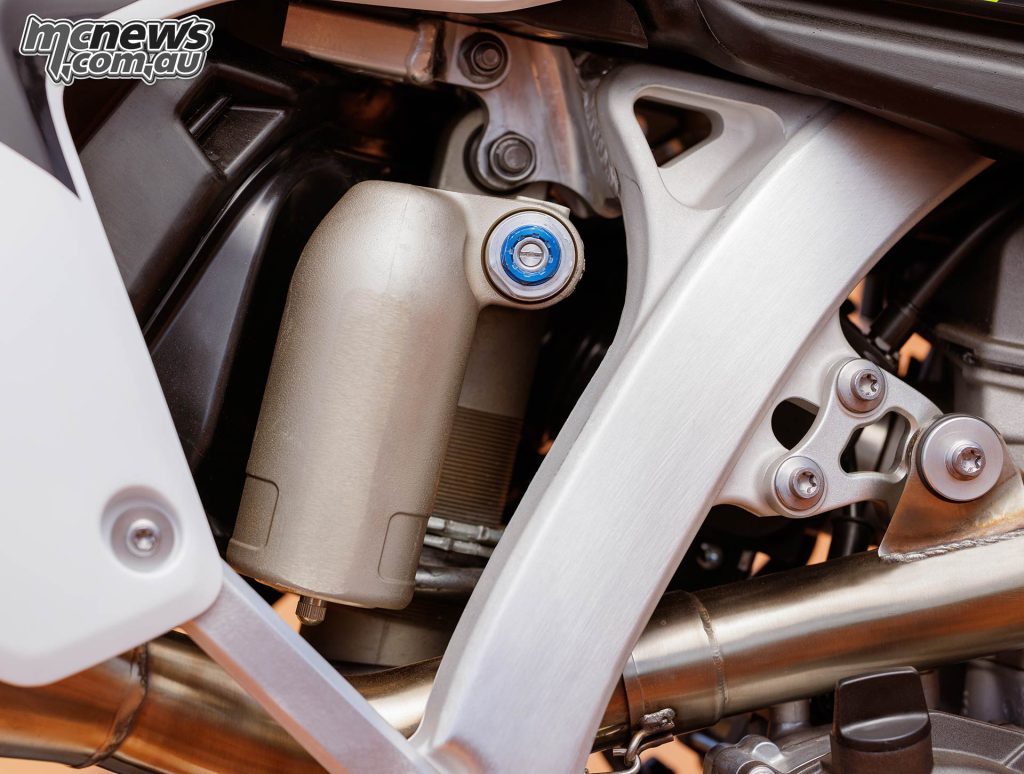
And that’s exactly how I intended to ride it on our first outing, straight out of the box with standard settings.
First lap, on a freshly groomed track, I was taken by how well the bike steered. Normally, when a bike steers this well, some straight-line stability is sacrificed. This wasn’t the case for the TF 250-X.
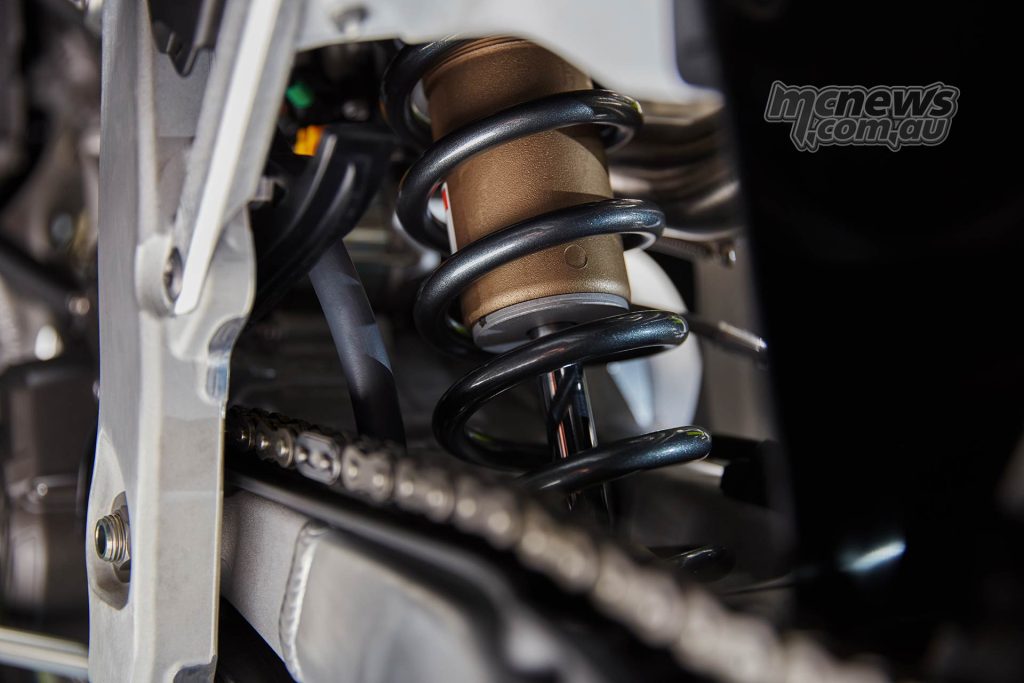
As the day went on and the track chopped up, the bike’s ability to remain stable at speed and under hard braking never wavered.
After familiarising myself with the bike in standard trim, I made some minor suspension adjustments.
I like to have a good, solid feeling from the front end, a planted feeling with plenty of ‘bite’.
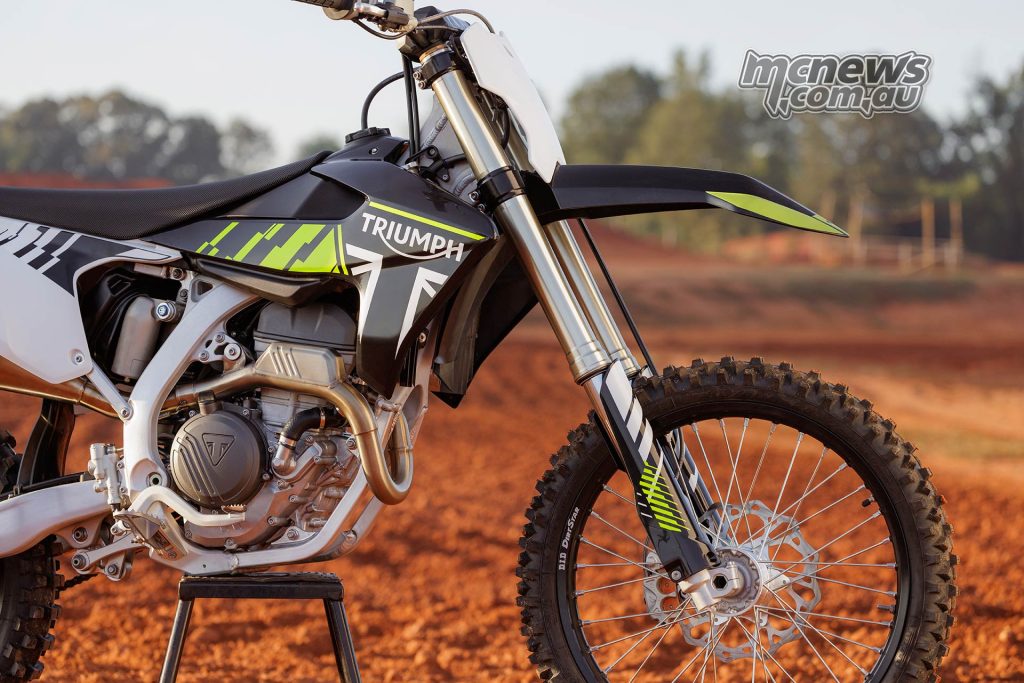
I reduced the sag on the rear spring from 105 mm to 102 mm to bring some weight over the front wheel. And being a lighter rider (I’m 70 kg), I went softer on both compression and rebound on the forks to allow it to move through the stroke a little easier.
It was that simple to get the feeling I was looking for. Given my lack of weight, I may opt for a softer rear spring if I owned the bike. Triumph has a range of genuine springs in varying weights available.
On the track, the ergos and rider triangle felt comfortable right away. I found it a natural and neutral position. The Pro Taper bars had the perfect shape to complement the footpeg-to-seat ratio, and the standard ODI lock-on grips added a nice finishing touch.

On the handlebars, the switch-blocks are probably the most user-friendly ones on the market. The bike comes standard with launch control, quick-shifter, and traction control.
All of these are accessible via the left-hand switch-block. Each has its own button clearly marked, LC, QS, TC, and the fourth button marked MAP, for selecting one of two maps available on the fly.
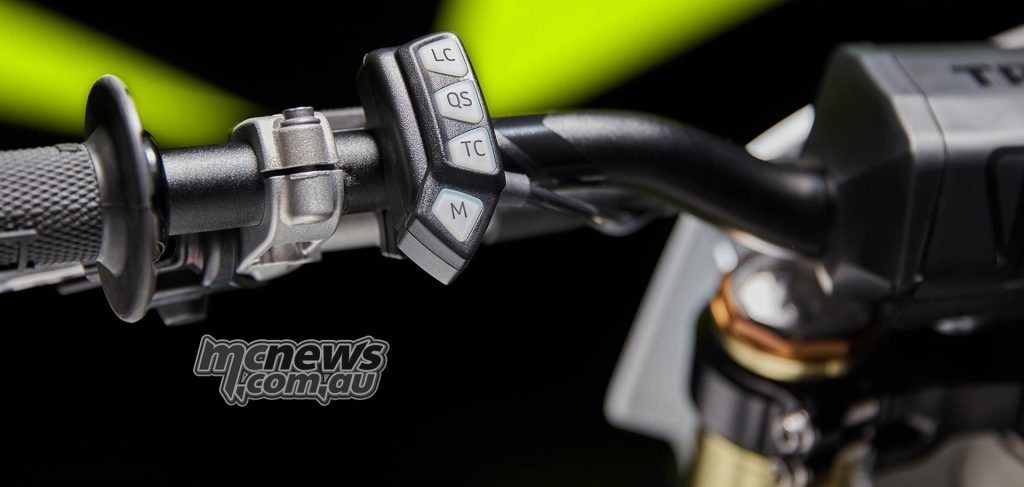
Additional maps can be uploaded to the ECU via your smartphone using the Triumph MX Pro Tune App.
On the right-hand block, you’ll find a small grey start button and a nice big red stop button. Simple and easy.
It was here I had to satisfy my own curiosity.
I have used launch control and traction control on dirt bikes, but I’ve never used a quick-shifter. I was intrigued.
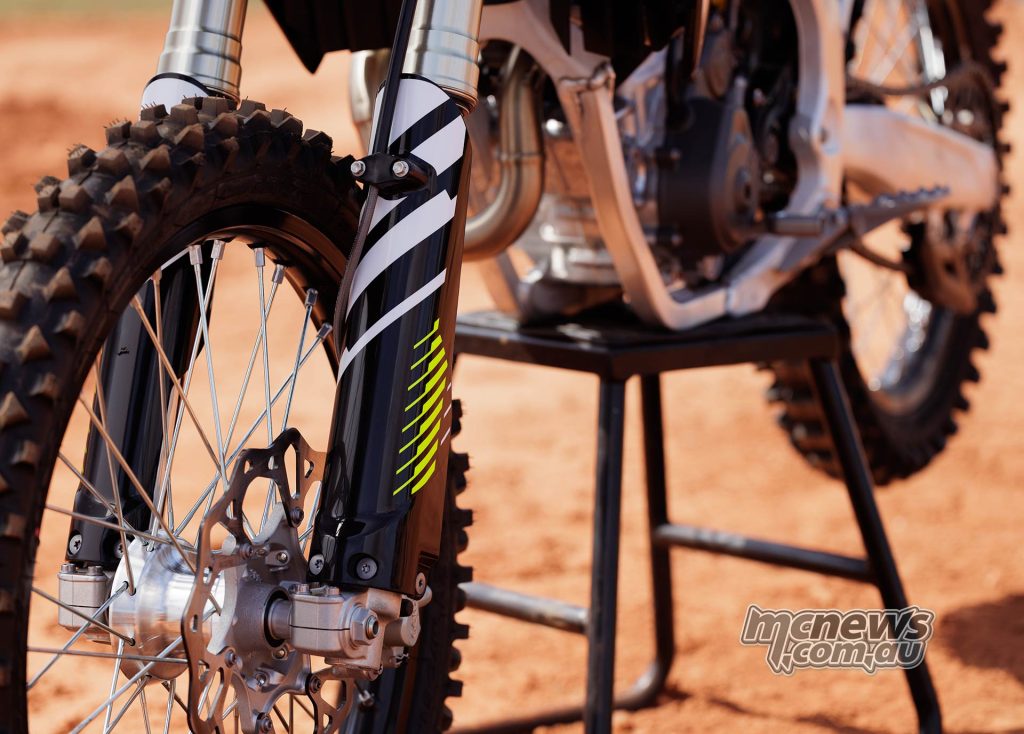
In the week leading up to this launch, the track received over 120 mm of rain, making it a bit soft and slippery in some areas.
Given that the bikes were also brand new and not yet run-in properly, a common complaint was that most of us were struggling to up-shift. The heavy track added extra load to a brand-new-tight gearbox. Pressing the QS button to activate the quick-shifter immediately solved this minor issue. Gear changes became light and easy.
This also answered a question for me: When would a quick-shifter really be needed on a motocross bike, and would it actually help?
The answer is: Yes, it helps, and this is the exact situation you would want to use one in.
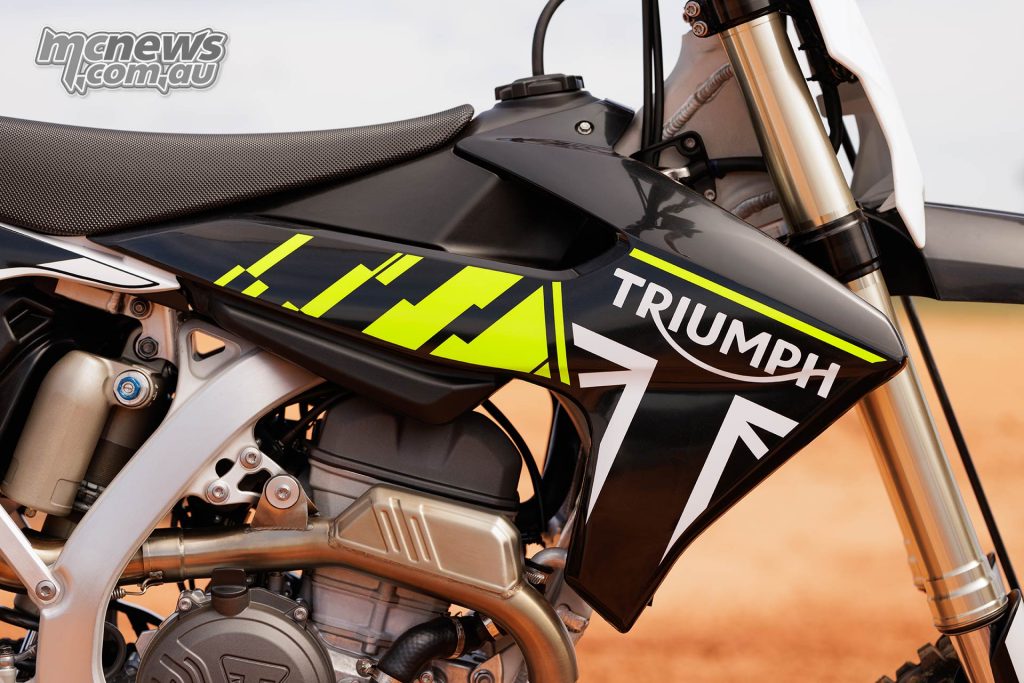
On a cool morning when a gearbox feels tight and fresh, a heavy track means extra load to the gearbox, the quick-shifter makes all the difference. Yes, it cuts ignition on the upshift, but never do you notice a drop in power or the bike losing its forward momentum. It’s brilliant, and after having used it, you won’t want to ride without one.
Brakes are Brembo and provide sufficient, strong stopping power and a consistent feel. They can be used with finesse on the entry to more technical corners, yet at the end of fast straights, when aggressive stopping power is needed, you can send it in deep.

The clutch is a hydraulically operated wet Exedy with what Triumph calls a Belleville spring. Most of us would refer to it as a cone washer set-up.
If I were given the choice between cable and hydraulic, I would choose cable. A cable is a basic mechanical device, not subject to things like fluid leaks or fluid degrading over time, causing issues with master cylinders, etc… The less that can potentially go wrong at the track, the better. And it’s easier to carry a spare cable than to carry spares for hydraulics.

In this case, the hydraulic clutch was impressive, a nice light pull with a positive engagement. I’m not the type or rider who’s hard on the clutch. With 26 years of racing motocross, I’ve never had a clutch burn out or fail.
Everyone values a good feel at the lever and consistency. The clutch on the TF 250-X provided both.
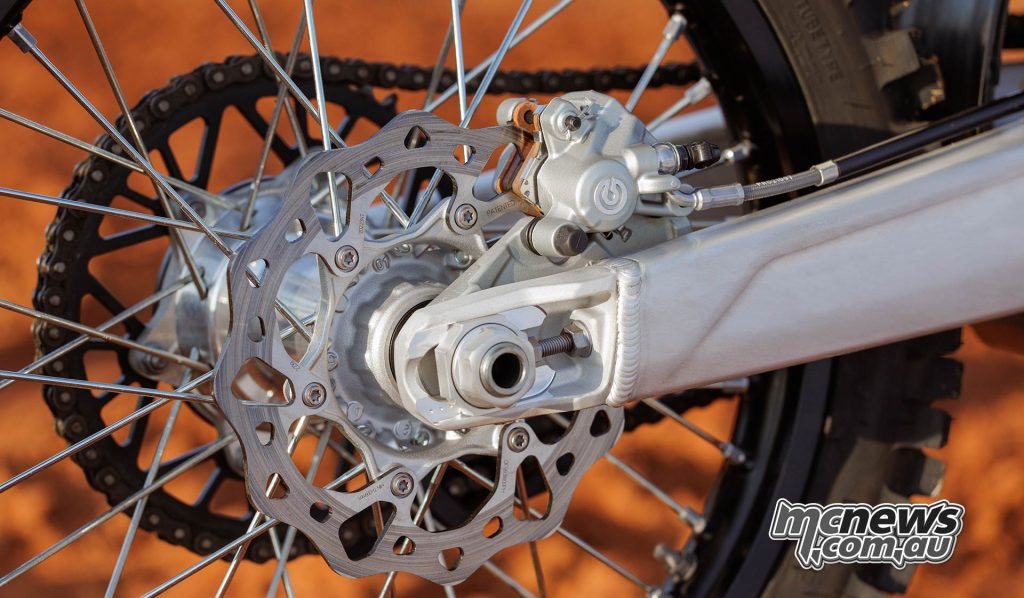
The quality of finish throughout the bike is superb; from the engine cases to the hand-welds on the frame, the finish on the swing-arm, and even neat little keepers to hold the throttle cables secure, nothing is missed.
For me, the huge looming question that hangs over any motorcycle designed to spend its life under stress is durability and longevity. After all, I would rather ride a bike than work on it.
Triumph offers a generous 45-hour service life for the piston and top-end, while most other manufacturers offer fifteen hours.
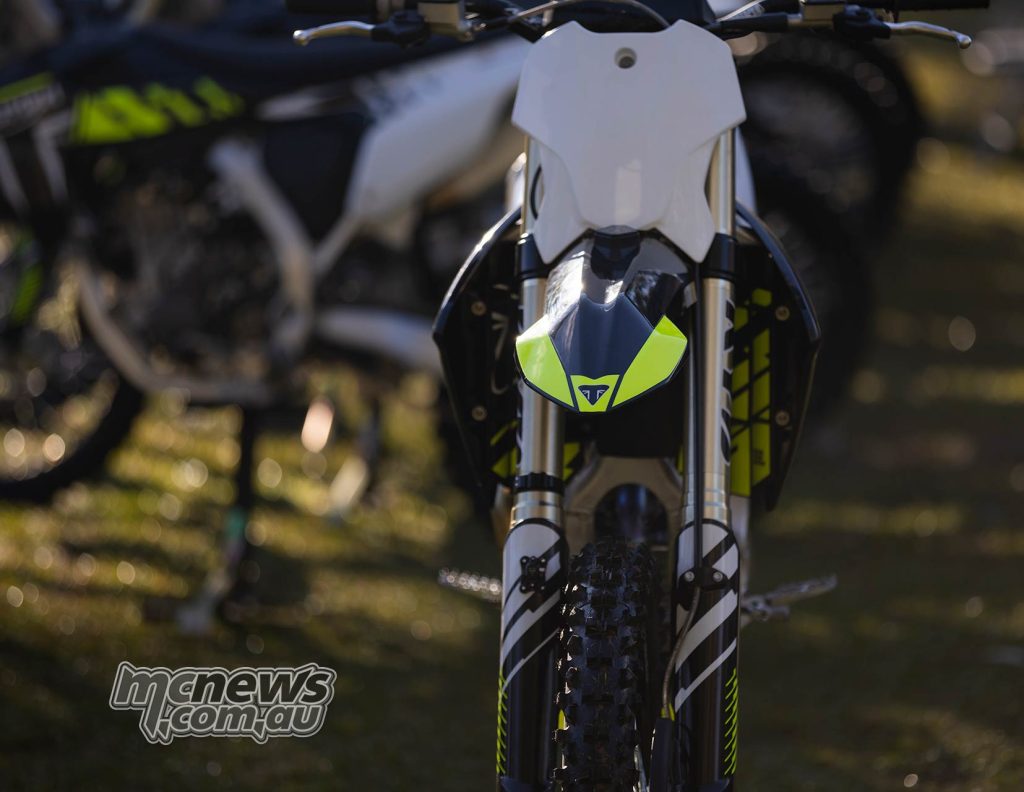
The release of this new player in the motocross market is, I believe, a good thing for us consumers. Because it can only get better from here. Triumph will keep developing and improving its motocrosser, and it’s already at a very high level.
It will also attract attention from other manufacturers and keep them at the top of their game as well.
We, the riders, reap those benefits.
As for now, Triumph has released a real class-contender that will rival any of its competition.
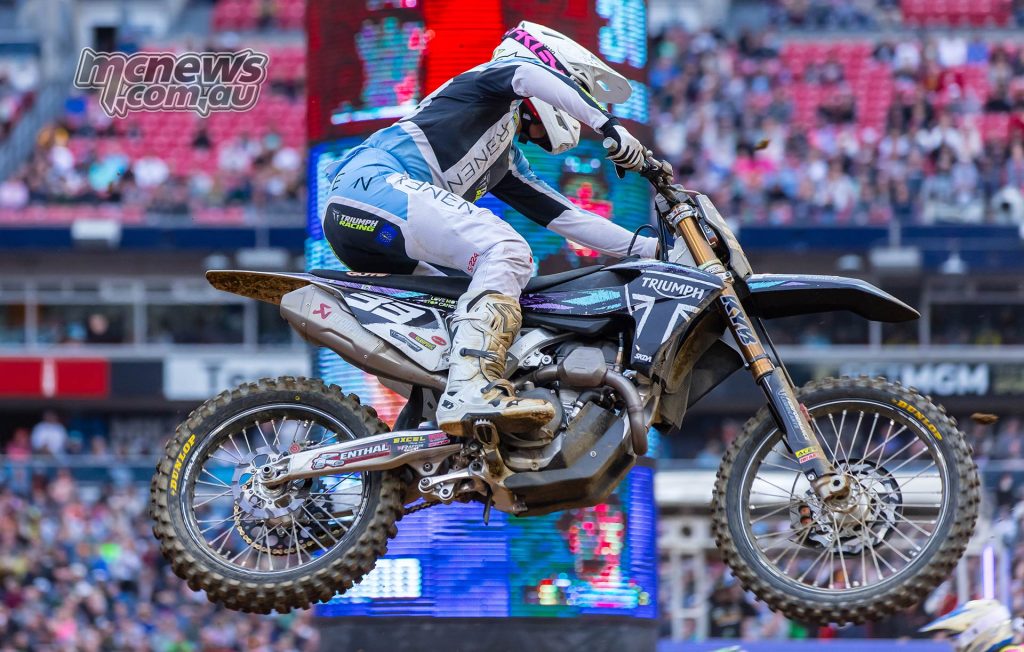
The bike itself is a platform that will cater to many riders from varying skill levels and rider preferences. I set my bikes up to steer well with the front wheel, but others are rear-wheel steerers and set their bikes up accordingly. The Triumph TF250X will serve riders all the way through that spectrum.
The future of motocrossers may be brighter than many think.
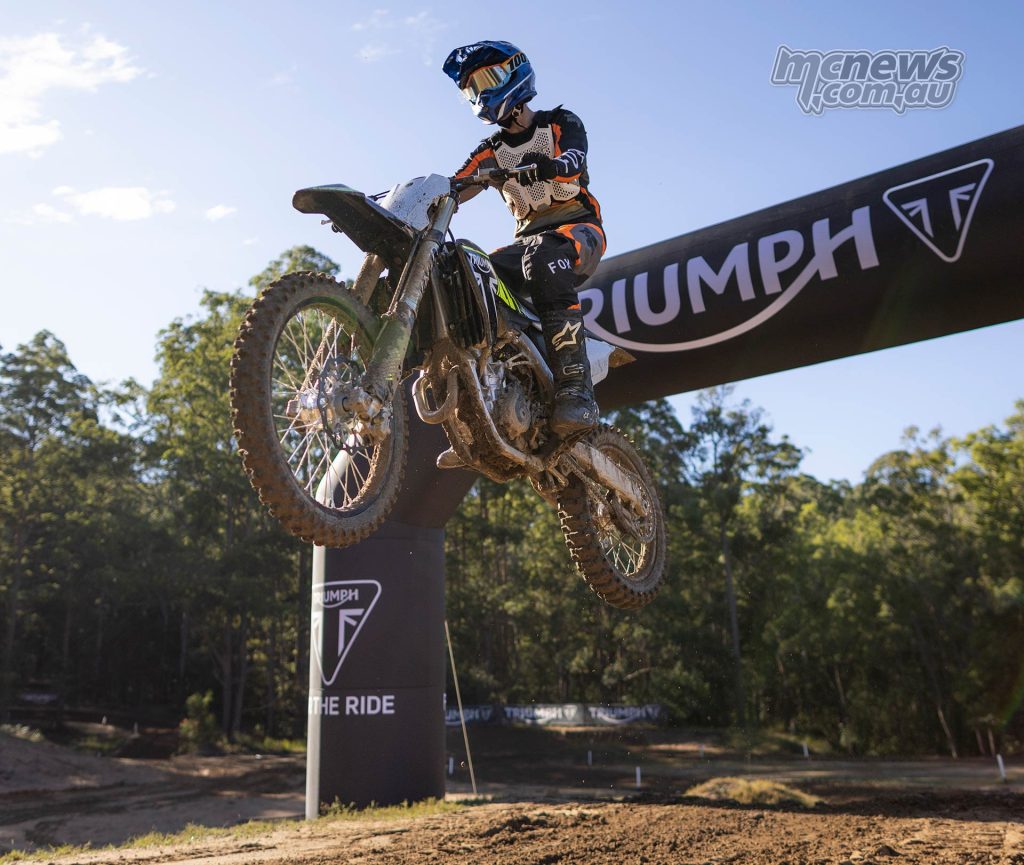
Triumph TF 250-X Specifications
| Engine & Transmision | |
| Type | Single cylinder 4-Stroke DOHC |
| Capacity | 249.95cc |
| Bore | 78mm |
| Stroke | 52.3mm |
| Compression ratio | 14.4 |
| Claimed power | 47 hp (35 kW) |
| Claimed torque | 28 Nm at 9000 rpm |
| System | Dell’Orto EFI, Athena EMA |
| Exhaust | Single silencer |
| Final drive | 13/48 |
| Clutch | Wet, multi-plate Belleville spring |
| Gearbox | 5-speed |
| Chassis | |
| Frame | Aluminium, spine |
| Swingarm | Aluminium fabrication |
| Front wheel | 21″ x 1.6″ |
| Rear wheel | 19″ x 1.85″ |
| Front tyre | 80/100 – 21 |
| Rear tyre | 100/90 – 19 |
| Front suspension | KYB 48mm coil spring fork, compression/rebound adjustment, 310mm travel |
| Rear suspension | KYB coil, compression adjustment (H and L Speed), rebound adjustment, 305mm travel |
| Front brake | Brembo twin 24mm piston, 260mm disc |
| Rear brake | Brembo single 26mm piston, 220mm disc |
| Instrument display and functions | Hour meter, multifunction switch cubes |
| Dimensions & Weights | |
| Width handlebars | 836mm |
| Height | 1270mm |
| Seat height | 960mm |
| Wheelbase | 1492mm |
| Rake | 27.4º |
| Trail | 116mm |
| Wet weight | 104kg |
| Tank capacity | 7.0L |
| RRP | $14,250 Ride Away |

